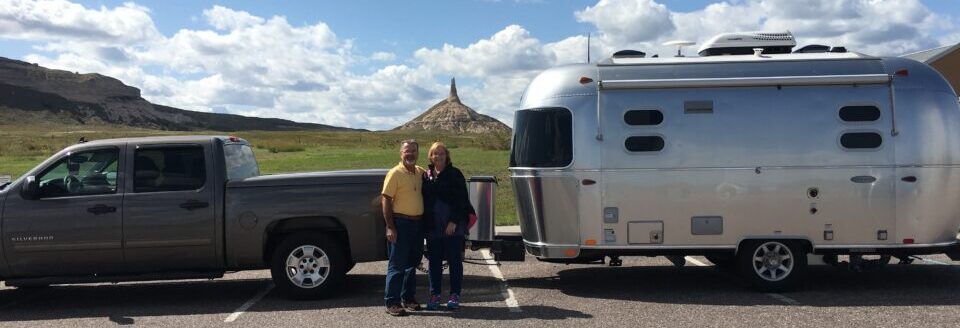Tags
Deprecated: trim(): Passing null to parameter #1 ($string) of type string is deprecated in /home3/myliffu6/public_html/wp-content/plugins/shareaholicold/public.php on line 457
Deprecated: trim(): Passing null to parameter #1 ($string) of type string is deprecated in /home3/myliffu6/public_html/wp-content/plugins/shareaholicold/public.php on line 463
Deprecated: trim(): Passing null to parameter #1 ($string) of type string is deprecated in /home3/myliffu6/public_html/wp-content/plugins/shareaholicold/public.php on line 469
 Yes – for me. Financial Freedom and Management can be easy. It takes discipline – more for some than others, but financial management and independence can be yours if it is something you truly desire.
Yes – for me. Financial Freedom and Management can be easy. It takes discipline – more for some than others, but financial management and independence can be yours if it is something you truly desire.
I am someone who pays the savings account first – and that’s the secret. You may be thinking – yeah, right! How can I do that when I owe so much on the credit card. Therein lies the secret. You need to put a moratorium on your spending, at least until you get your bills and expenses under control.
I was in the habit of putting money away each month, but had all the categories lumped together. After reading Debt-Proof Living by Mary Hunt, I tweaked my system and began breaking the dollar amounts into categories and found that I liked this way of handling the money.
If you have credit card debt, I would advise checking out the book (why incur more debt) from your local library and reading it. It is a fast read and won’t take you long to read. Mary Hunt is someone who knows what it is like to be in debt, so she knows all about where you may be right now. The book explains how to eliminate that debt and you will need to do that before moving on to the steps I am about to outline for you.
Finding hidden money and eliminating debt will take a little sacrifice. Again, more for some than others. You may have to give up the Starbucks and the cable tv for a while to accomplish this feat. Not forever, just long enough to get a handle on your debt. And, if getting your finances in order is important, you will be willing to do what is necessary.
Just calculate the amount of your cable bill and Starbucks habit. I bet it will easily come to around $100. If you have credit card debt of $1,000, then in ten months you can be free of that debt. Eating take-out several times a week can run up quite a bill. You will need to make some personal choices about what is more important to you – eating out or being in debt?
After you’ve made the difficult or not so difficult choices I have mentioned above, and worked your way out of debt, I am going to show you how to manage your finances. This is the system I use and it works. Once you’ve taken care of necessities, then go and enjoy that once in a while Starbucks cup of coffee.
Each person will have different expenses they need to budget for, but most of us have at least these in common – car insurance, homeowner (or renters) insurance, dental bills, Christmas and birthday, and vacation. I also recommend adding long-term and short-term (Debt-Proof Living) savings to the list. In short, long-term savings is not to be touched and short-term savings can be described as a revolving account. It is used for repairs to the refrigerator or the car, etc. It is money that is saved for everyday expenses that have the ability to set you back and put you into debt.
If you do have debt, this process will take you longer to accomplish, but it at least helps to have the above as a goal to work towards. Auto insurance is a given. It is against the law to drive without insurance. What I did was take my yearly bill and divide it by twelve months. I then put that amount in savings each month. It didn’t happen all at once as I said. You need to be diligent to get to this point. I then did the same with our Homeowner’s insurance. The dental insurance being offered through Hubby’s employment was more expensive than the visits were costing, so after careful consideration, we dropped the insurance and I put that amount in savings each month for our regular dental visits. The short-term insurance is used for unexpected expenses like the crown Hubby just had done.
Let me add here that you do not need any fancy equipment or books to keep track of your spending; a simple notebook or ledger book will suffice. If you are computer savvy, do a spreadsheet in Excel. I began this program using a ledger sheet and then graduated to a spreadsheet for my information and Quickbooks for my accounting (these can both be done in Excel).
The first step is creating what will be called your “Freedom Fund.” Aptly named, it will give you freedom from worry. The categories that I came up with for my family are Homeowner’s Insurance, Vehicle Insurance, Short-Term Savings, Long-Term Savings, Gifts, Vacation, and House Fund. Categories I’ve used in the past have included dental, car fund, and charity. We were saving to purchase a car so I paid a note to the savings to save for the purchase. Same with dental and charity. As we have gotten older, the other two categories are not things I need to save for. I’ve included them either in short-term savings or just deduct them from the checking account each month. You will find your categories will change as time goes on. Concentrate on what needs your attention in the present.
I divided each of these categories by twelve (12 months in a year) and wrote down the amount. What most people do not stop to think is that you are paying for the privilege of monthly payments on your insurances. You are literally giving the insurance companies $4 a month just to send them a check. Multiply that times 12 and you gifted your insurance company approximately $50. Did they at least send a thank you note? Then, multiply that times two – homeowner’s and auto – and you’ve gifted them $100. I don’t know about you, but I would prefer that $100 to be in my savings account.
Multiply your monthly expenses (cable, phone, etc.) by twelve and see if you really need those expenses – or will that amount pay off your credit card if you give them up for a year or at least dial it back a notch.
Once you have your categories (I’ve inserted a spreadsheet to show you how I keep track – I’ve eliminated some personal information) and the yearly amount needed, you can begin to build your categories and monthly amounts. I set up an amount for short-term savings based on our personal experiences. The same goes for vacation and gifts. We decided what we wanted to give (and could afford) as gifts for Christmas and that is how the amount was determined. There were times when we could only afford $50 per child, so look at your own income and circumstance before coming up with a reasonable figure.
| Freedom Account | ||
| Sub-Accounts | ||
| Description | Save/Year | Save/Month |
| Monthly Retirement Check: $ | ||
| Homeowners Insurance (Due April) | $660.00 | $55.00 |
| Vehicle Insurance (Due Mar & Sept) | $1,740.00 | $145.00 |
| Short-Term Savings Fund | $2,400.00 | $200.00 |
| Long-Term Savings Fund | $4,800.00 | $400.00 |
| Other Investments | $ | $ |
| Car Fund (Goal: 48 mos. $21,600) | $1,800.00 | $150.00 |
| Charity (will pay each month fr. Household) | ||
| Gifts: Christmas ($500×2) Birthday (Comes from Ckng. $50×2) | $1,200.00 | $100.00 |
| Vacation | $4,200.00 | $350.00 |
| House Fund (met goal) | $- | $- |
| Totals: | $16,800.00 | $1,400.00 |
I have reached an amount in our house fund where we feel we can meet any foreseen expenses that may arise. We live in hurricane country and the amount saved includes a $5,000 hurricane deductible on our insurance. As I indicated, everyone’s expenses are different. Go through your last couple of year’s expenses to determine what to anticipate.
When you are ready to set up your notebook, label a page with each category (similar to above). As you make your monthly (bi-weekly, etc depending on when you get paid) deposits into your Freedom Fund, record the amount.
It goes without saying, but I will say it anyway. You first have to sit down with your checkbook and list your income and expenditures and see where your money is going. See where you can cut back or eliminate. Make a budget that you can live with. It won’t work if you make a wish I could live this way budget. It needs to be realistic. Pay down and off your credit cards. Paying off your debt, no matter how daunting, is doable. It takes discipline, discipline and desire.
I’ve helped numerous people by explaining this system. It is easy to grasp and put into motion. I gave the book to all of our children – a couple of them even read it and one uses this system after seeing my system in motion. She even made the comment about how much we do with so little.
If you have questions, please feel free to comment. I will be more than happy to expound on any part of this post. I’ll also be doing more posts in the future because I feel that being financially independent and debt free is part of making our country a better country. And isn’t being out of debt much more freeing than instant gratification – which is what put you in debt to begin with.
I know that there will always be extenuating circumstances that are beyond our control that may cause debt – medical bills, etc. but we can get a handle on our everyday expenses so that when this happens, we will not be so overwhelmed.
Disclaimer: I am not a financial advisor or an accountant. In fact, I hate working with numbers. What qualifies me to write on this subject? I use it and it works.
I hope you enjoyed this post and found some helpful hints. Here are a few other books by Mary Hunt that you might want to check out – literally – from the library, although they are worth the price to have at your fingertips. Just click on the icon.












Thanks for the advice. I am going to look into your book and will probably make you , what $2.00 richer by buying it. Put it into savings. 🙂
I’m so glad you found information worth looking into. I doubt very seriously I’ll make anything (I am an Amazon Affililate though). I hope you’ll come back and let me know what you thought of the book. Thanks!
Excellent article with great advice. You have a way of motivating!
Thank you so much for the compliment. I hope you’ll stop by again.